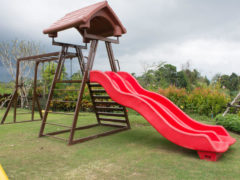Are you considering pavement as a playground surfacing option? Playgrounds are designed to be safe and fun for children to play on, and a significant factor in a playground’s safety is the surface you build it on. Of course, you need a stable surface to support the play structures, but does that mean you can use concrete or asphalt for your outdoor playground’s flooring?
Read on for everything you need to know about blacktop and cement playgrounds.
What is Pavement for Playground Flooring?
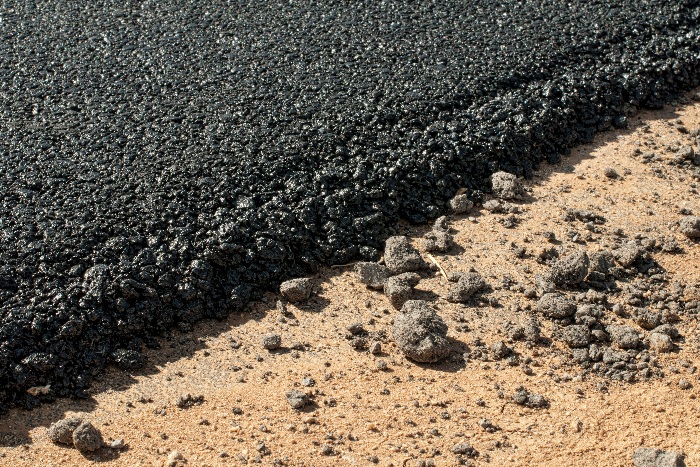
Pavement is a common term for outdoor flooring that is often used interchangeably with asphalt or concrete. Asphalt is a mixture of dark bituminous pitch and sand or gravel. Concrete is a material made from a mix of stone, sand, cement, and water spread or poured to form a stone-like mass.
Sometimes stones like flagstone or cobblestone, bricks, tiles, or concrete pavers are used as pavement. You can easily stencil games, shapes, or logos on this type of surface, adding to its versatility. Often you’ll find pavement used on sidewalks, road surfaces, patios, courtyards, and sometimes playgrounds.
- Safety and Accessibility of Pavement
- Cost of Pavement
- Quality and Maintenance of Pavement
- Installation of Pavement
Safety of Pavement as a Playground Surface
Pros:
- While concrete and asphalt playground pavement surfaces are ADA compliant for ramps and flooring, it might be better to use them sparingly under structures.
- If you’re determined to use playground pavement, opt for a playspace with a tactical experience, adding textures like rumble strips or undulations to concrete or asphalt surfaces.
- Children with special needs, in particular, can benefit from play that stimulates their sense of touch.

Cons:
- Concrete has almost no shock absorbency, nor does it meet ASTM standards for fall height. Without these critical safety endorsements, concrete is unsafe for use directly under play structures.
- The bottom line is you don’t want kids falling from tall playground equipment onto a hard surface like concrete or asphalt pavement. A severe head injury can occur due to a fall from the equipment.
- Wear and weather can also create cracks in the surface, possibly causing a child to trip and fall. Using this type of surfacing is dangerous.
Cost of Pavement for Playground Flooring
Pros:
- Asphalt or concrete pavement for playground surfaces is significantly cheaper than other surfacing options.
- Asphalt can cost $2 to $4 per square foot, although these prices fluctuate with crude oil prices. Concrete can cost $4 to $6 per square foot.
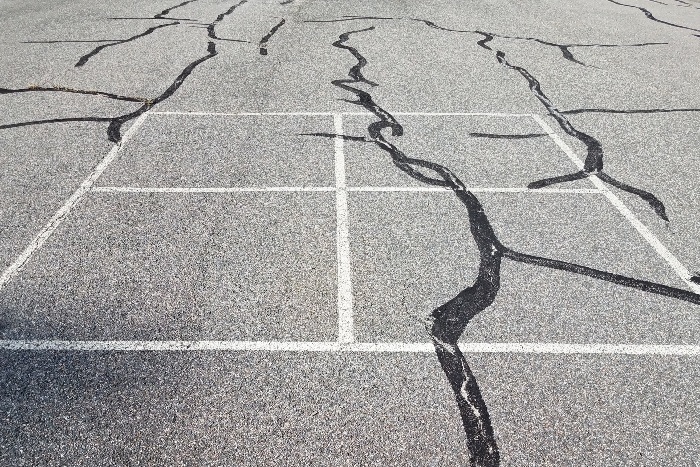
Cons:
- If you’re looking for additional finishes, details, and stains, the cost of pavement can increase price up to $15 per square foot, costing nearly $30,000 to install a 2,000 square foot playground surface.
- Concrete crack repairs are complicated and much pricier than asphalt, although it’s near impossible to resurface concrete.
- Concrete slab repairs alone can cost $50 for a small crack and up to $500 to $800 to mudjack or raise and stabilize sinking or cracked uneven surface.
- A sealing coat for asphalt can cost $.14 to $.25 per square foot, costing about $280 to $500 for a 2,000 square foot playground. Sealing asphalt should be done every three to five years.
- Generally, it costs $1 to $3 per linear for filling small cracks in asphalt. The repair cost can range between $100 to $125, but it depends on the severity of the damages and the labor required.
Quality and maintenance of Pavement for Playground Surfacing
Pros:
- Concrete is more durable than asphalt pavement, offering up to 50 years of use, whereas asphalt offers about 30 years of service.
- As for maintenance, concrete requires occasional degreasing. However, if installed correctly with proper site preparation, you shouldn’t have issues with drainage.
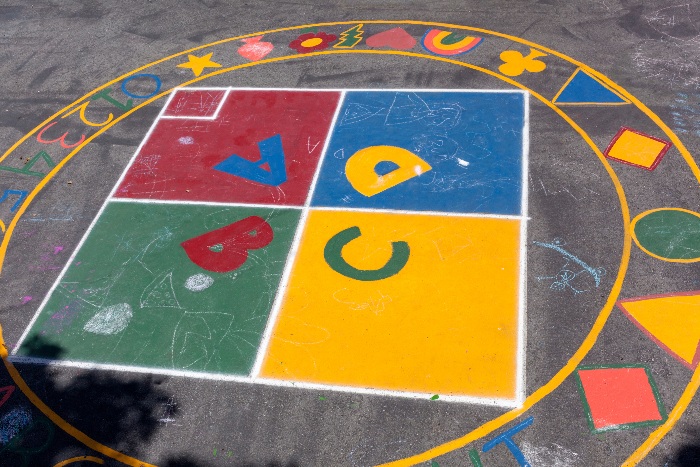
Cons:
- While concrete is more durable, concrete repairs are harder and pricier than asphalt repairs.
- Asphalt will need occasional resurfacing and resealing every five years, but you can avoid expensive repairs with proper maintenance.
- Over time, concrete and asphalt surfaces can crack or split, causing tripping hazards. These cracks or splits become a haven for weeds. It would be best if you patched the gaps in the surface as soon as possible to extend the life of the paved area.
- Concrete can crack from constant freezing and thawing in cold weather, while rock salt will eat away at the asphalt.
- Hot temperatures can create a mess with asphalt, causing it to soften, stick to shoes, clothing, and wheelchair tires.
Installation of Pavement Playground Surfacing
Pros:
- It’s easy to find concrete material at your local home improvement store. However, it’s best to hire professionals to do the work with a big job like this.
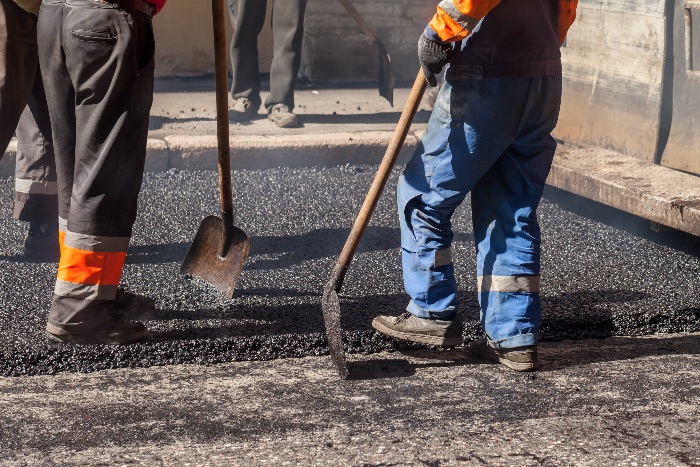
Cons:
- Leave asphalt and concrete pavement surfacing to the professionals. There’s too much that can go wrong, and it’s well worth working with a team of professionals to tackle this type of playground surfacing.
- Asphalt and concrete pavement require similar site prep as other surfacing options: demolition and removal of existing surface and then grading and sloping for drainage.
- The installation process for both surfacing options can get tricky.
- With asphalt, you need an additional compacted sub-base to serve as a frost barrier and provide durability. Next, you lay a binder layer mixed with oil.
- Finally, the asphalt is added and later rolled smooth. For concrete pavement, you’ll need ready-mixed concrete via truck for such a big job. Suppose you don’t correctly install and grade the base surface. In that case, you could have to demo the entire surface in a year after it cracks and begins the process over again.
Alternatives to Concrete for Playground
If you’re planning your playground flooring, our professionals are ready to get the job done right and with suitable surfacing. So why not try something safe like poured-in-place rubber surfacing material?
Soon enough, kids will safely enjoy a new or improved playground at school or a public park. Contact adventureTURF today for high-quality rubber surfacing material crafted to keep your playground safe, fun, and comfortable for everyone.
With so many different qualities and characteristics to consider, choosing a playground surface can be bewildering. That’s why we’ve created an ultimate guide of all the pros and cons of 11 of the most popular playground surfaces, from wood chips to recycled rubber mulch.
FAQ
Asphalt can cost $2 to $4 per square foot, although these prices fluctuate with crude oil prices. Concrete can cost $4 to $6 per square foot.
Learn More
Often you’ll find pavement used on sidewalks, road surfaces, patios, courtyards, and sometimes playgrounds.
Learn More
Asphalt and concrete pavement require similar site prep as other surfacing options: demolition and removal of existing surface and then grading and sloping for drainage.
Learn More


